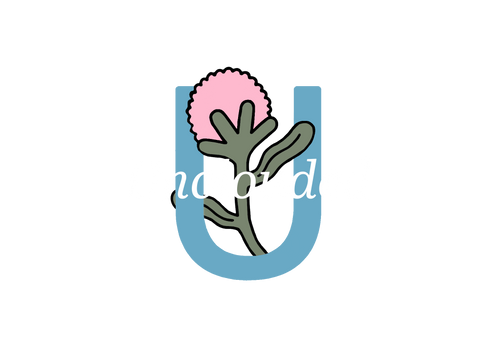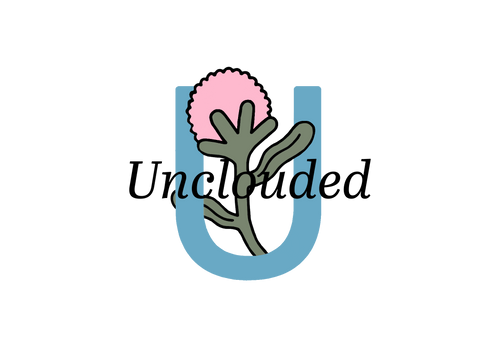Stepping into the world of braiding can be both thrilling and intimidating. With so many styles to choose from and countless tutorials to follow, it's no surprise that there are a few myths floating around. There's one particular myth that we feel needs to be addressed straight off the bat: the perception that synthetic braiding hair is damaging. Is that really the case? Let's delve into this further.
1.) Setting the Record Straight: Synthetic Braiding Hair is Not Damaging
Understanding the Synthetic Hair Controversy
“Synthetic braiding hair damages natural hair and causes it to break.”
This widely held belief is based on a partial truth. Synthetic hair can cause damage, but only if you don't take the necessary steps to protect your natural hair. In reality, synthetic hair is a great, cost-effective alternative for protective styling when used correctly.
- Don't neglect your natural hair: Braiding your hair doesn't mean you can take a break from taking care of it. It's important to keep your hair and scalp well moisturized and clean, even when it's in braids.
- Choose quality hair: Not all synthetic braid hair is created equal. Paying a bit more for a higher quality product is better for your natural hair in the long run.
- Give your hair a break: Leaving braids in for extended periods of time can strain your hair roots. It's beneficial to allow your hair to rest and rejuvenate between braiding.
So the myth that synthetic braiding hair is damaging rests solely on how the hair is maintained and managed. Now that we have that out of the way, let's debunk more myths.
Other Myths About Braiding Hair
Myth Reality Braiding hair can lead to baldness Too-tight braids can cause hair loss, but regular and properly handled braiding does not lead to baldness Once you start braiding, you can't stop This is a personal choice. Your hair won't become dependent on braids nor does it stop growing if you decide to stop braiding. Anyone can braid your hair While anyone can technically braid hair, skilled braiders know how to prevent unnecessary tension and hair damage. After debunking these myths, it's clear that knowledge about braiding hair is power. The more information you have, the better you can care for your braids, and by extension, your natural hair.
2.) Saving Time and Money: Bust the Myth That Braiding Hair is Time-Consuming
Braiding hair has often been shrouded in myths and misconceptions. One such common myth is that braiding hair consumes a lot of time and therefore, is not suitable for a fast-paced lifestyle. Let's debunk this myth once and for all.
Myth: Braiding hair is a time-consuming process.
This is far from the truth. While the initial process of braiding your hair may take some time, it's certainly a sound investment. Once your hair is braided, it can maintain the style for weeks or even months, without requiring daily styling and maintenance. Think about the countless hours you'd typically spend each morning ironing, blow-drying, or individually styling each tress. With braiding hair, you simply wake up and go, saving you ample time every single day.
Fact: Braiding hair can actually save you time in the long-run.
Let's break down the math.
Activity Time Spent Weekly (without braids) Time Spent Weekly (with braids) Daily Hair Styling 7 hours 0 hours Hair Maintenance 3 hours 1 hour As the comparison table clearly depicts, the amount of time saved on daily grooming and upkeep is significant when you opt for braiding hair. Plus, the fact that you’re not subjecting your hair to regular heat or chemical treatment means healthier tresses in the long run. This method of styling isn't just a time-saver, but also an effective protective measure against hair damage.
Bottom line: Not only is the time spent braiding hair a worthy investment, but it also contributes to less hair stress and more time for you to do the things you love.
3.) Braiding Hair 101: Bust the Myth of Complicated Maintenance
Picture this: You've just had your hair beautifully braided - it looks amazing, feels great, and honestly, gives you an extra boost of confidence. But something is bugging you, as it does every time you get a new hairstyle - maintenance. The popular belief is that maintaining braids is a tedious and complicated process. You start questioning whether this protective style was even worth it. Well, relax. We are here to bust this myth once and for all.
The Complexity of Braiding Hair Maintenance
Braiding hair doesn't require excess grooming and maintenance. Remember, one of the primary functions of this protective style is to offer your hair a break from constant manipulation, heat and chemical treatments.Here are a few simple yet practical ways to maintain your braids:
- Keep Your Scalp Clean: Contrary to the myth, no, you don't have to avoid water. Cleanliness is vital. Washing your braids at least once every two weeks should suffice. Invest in a good shampoo that rids your hair of build-up but doesn't strip its natural oil.
- Moisturize: Braided hair does get dry. Make sure you're keeping your hair moisturized. A blend of natural oils such as coconut or jojoba oil is a great option.
- Protect Your Braids: Tie your braided hair in a silk or satin scarf before you sleep. It helps to maintain moisture and prevent frizzy looking braids.
Guess what? That's it! Your hair care routine doesn't have to change drastically when you get braids.
The Myth About Synthetic Braiding Hair
Another popular sentiment is that synthetic braiding hair damages your natural hair. Not true. Synthetic hair is used to add length and volume to your braids. The real villain is poor installation and removal, not the synthetic hair itself.In a nutshell, get your hair braided by a professional, use quality synthetic hair, and give proper care to your braids. We assure you, the maintenance isn't as daunting as you've been led to believe.
4.) Cultural Appreciation vs. Cultural Appropriation: Debunking the Myth
If you're a fan of braiding or considering trying it out, it's crucial to understand the language that surrounds this popular hair trend. In particular, the terms 'cultural appreciation' and 'cultural appropriation' often come up when discussing braided hairstyles. One of the biggest myths surrounding the braiding culture is that there's a thin line between cultural appreciation and cultural appropriation when it involves braiding. Let's dismantle this myth and bring clarity to these two terms.
What is Cultural Appropriation?
Cultural appropriation, considered a hot-button issue, happens when a dominant culture adopts or "borrows" aspects of another culture, usually a minority group's culture, without permission. This adoption can include fashion, symbols, language, music, and, relevant to our discussion, hairstyles like braids. One critical point often overlooked is that this adoption is marked by a power dynamic in which the dominant culture takes from a culture without power.
Cultural appropriation generally involves the dominant culture's adoption of different elements from another culture not equally recognized or respected.
What is Cultural Appreciation?
On the flip side, cultural appreciation is about understanding and learning about another culture in an effort to broaden one's perspectives and understand others' experiences. It involves a genuine, respectful, and informed engagement with a culture, including adopting aspects of the culture following proper understanding and respect. When it comes to braiding, it means understanding the deep historical and cultural roots braids have in African cultures and the significance it holds before incorporating braided hairstyles.
Cultural appreciation focuses on learning, understanding, and appreciating aspects of a culture in a respectful and informed manner.Appreciation vs. Appropriation: The Key Difference
While both cultural appropriation and appreciation involve aspects of different cultures, it's necessary to distinguish the two.
5.) The Science Behind Braiding: Debunking the Myth That It Weakens Hair
Braiding hair is a timeless beauty ritual, and it's not just for aesthetics. A common myth is the belief that braids weaken the hair. Braiding hair can help to protect natural hair from damage and breakage.
Braids don't weaken your hair, but how you wear and maintain them can make all the difference.
Here's what you need to know:
- Maintenance is key: Braids can protect your hair and even help it grow if maintained properly. The secret lies in taking good care of your scalp and ensuring that your braids aren't too tight. This way, you can reap the benefits without experiencing any breakage.
- It's all about balance: Overdoing things with synthetic hair and tight braids can lead to tension and hair damage. Try not to leave braids in for too long, and give your hair some rest in between braidings to keep it healthy.
- Hydration is crucial: Braided hair can be more susceptible to dryness, which can cause breakage. Regular application of moisturizers, oils, and hair sprays can help keep that under control. Remember, hydrated hair is happy hair!
To recap, braids aren't necessarily the problem; it’s how they are managed. To fully enjoy the beautifying and protective effects of braiding, a balance of proper maintenance, hydration, and rest periods is essential.
Do Don't Maintain your hair and scalp Over-tighten your braids Hydrate regularly Leave braids in for too long Give your hair rest periods Forget to moisturize In Conclusion
Next time you hear someone say that braids weaken hair, know that this is a myth. Hair braiding, when done the right way and coupled with proper hair care, can serve as an effective protective style that promotes hair strength and growth.

